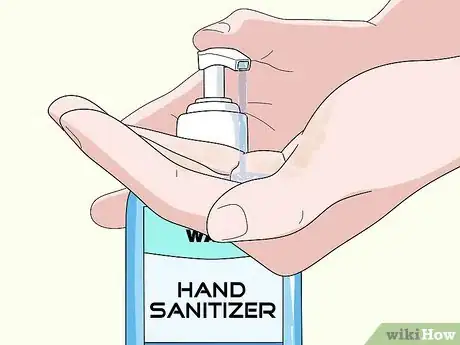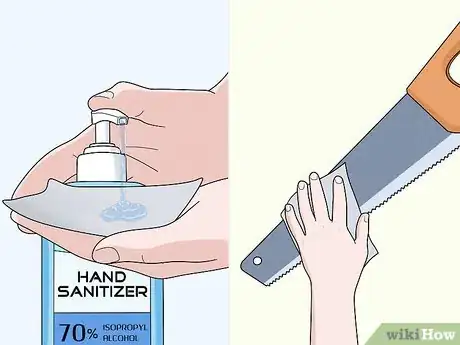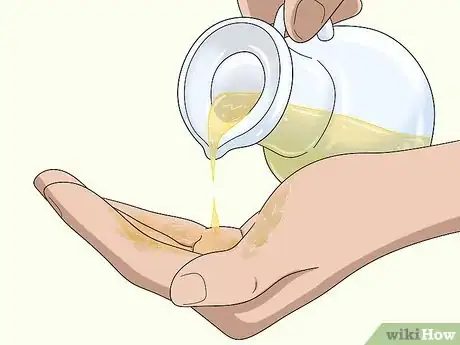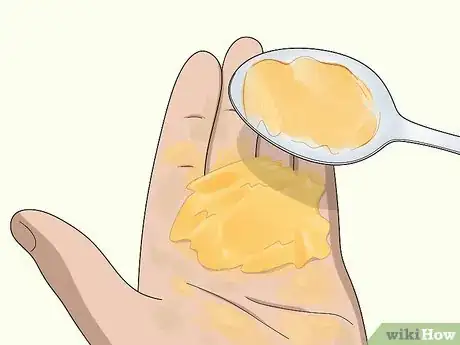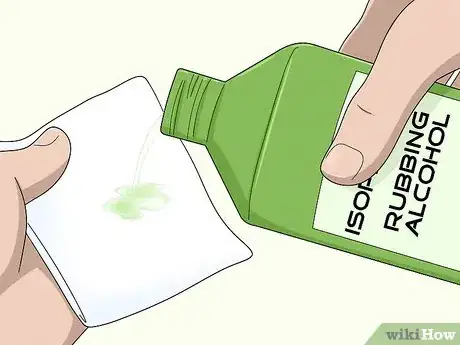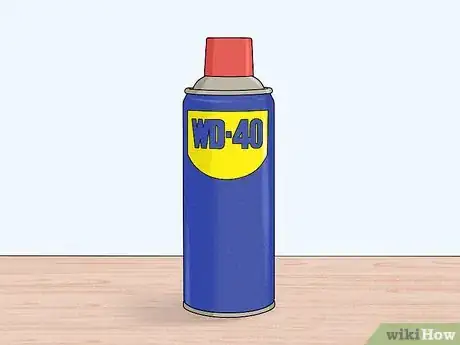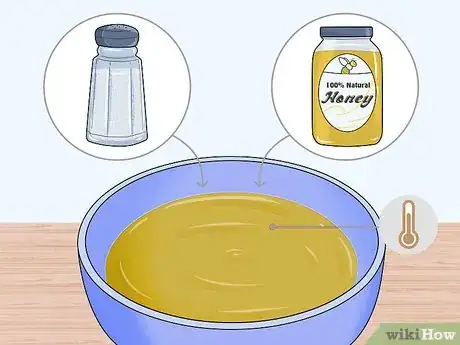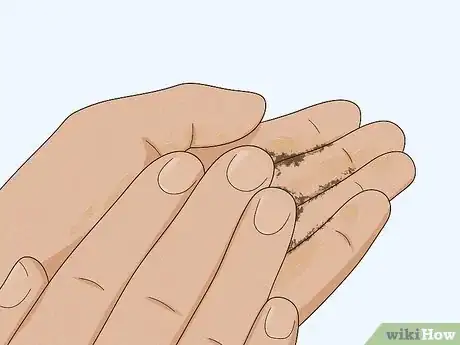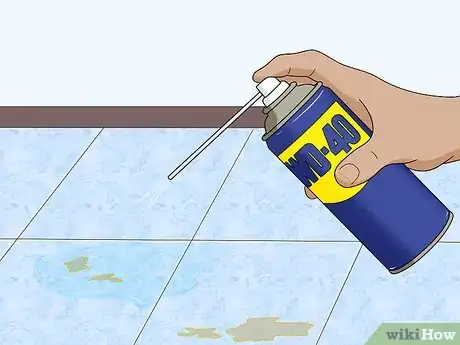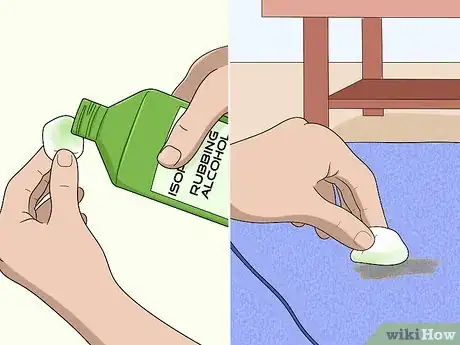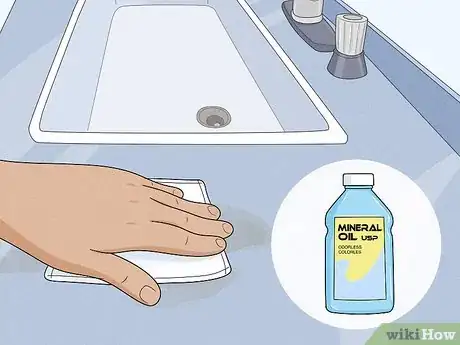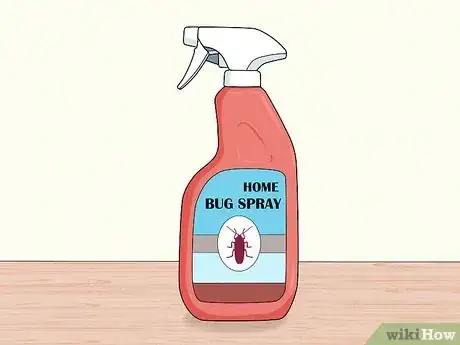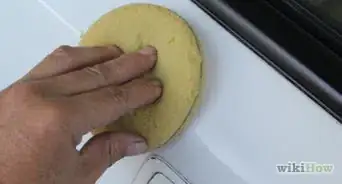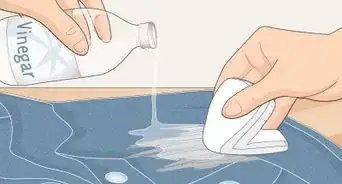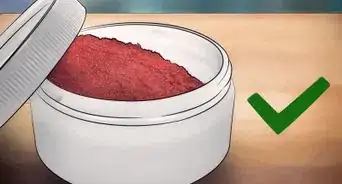This article was co-authored by wikiHow staff writer, Hannah Madden. Hannah Madden is a writer, editor, and artist currently living in Portland, Oregon. In 2018, she graduated from Portland State University with a B.S. in Environmental Studies. Hannah enjoys writing articles about conservation, sustainability, and eco-friendly products. When she isn’t writing, you can find Hannah working on hand embroidery projects and listening to music.
There are 8 references cited in this article, which can be found at the bottom of the page.
This article has been viewed 746,192 times.
Learn more...
Tree sap is one of the most maddening substances in the world. Touch a drop of it and it feels like you're battling with soap and water for an hour to remove the feeling of stickiness. However, you have all the tools you need to fight sap in your home right now, and it is easy to manage if you know how.
Steps
Using Hand-Sanitizer
-
1Check the ingredients to see if the sanitizer is alcohol-based. Pick up a bottle of hand sanitizer and check the ingredients label on the back of the bottle. Make sure that it contains at least 60% ethanol, isopropyl alcohol, or n-Propanal to be effective.[1]
- Non-alcohol-based hand sanitizer won’t work, since it’s the alcohol that dissolves the sap.
-
2Rub the hand sanitizer onto your hands to remove the sap. Grab the bottle of sanitizer and squirt a small amount into your palms, then rub it around vigorously. If there is any sap on the back of your hands, make sure you rub it all over your entire hand.[2]
- If you have sap anywhere else on your skin, like your feet or your arms, you can use the sanitizer there, too. Just be careful not to get sanitizer on any open cuts or sensitive areas of your body, as it could burn.
- Hand sanitizer with alcohol in it is very drying, so use caution if you have sensitive or flaky skin.
Advertisement -
3Wipe down your saw or pruners with hand sanitizer if they’re sticky. If you used any tools to cut or prune a tree and they have sap on them, squirt a few pumps of hand sanitizer onto a paper towel. Then, wipe down the blades of your tools with the hand sanitizer before you store them.[3]
- If your tools are sticky, it could dull the blades or even make the tools stick together completely, leaving them unusable.
Using Home Ingredients
-
1Use cooking oil, like vegetable, olive, or canola, or margarine to get it off. Rub a small bit of oil over your hand, scrubbing lightly over the sappy spots for 30-60seconds. When you're done, wash your hands with warm water and some dish detergent to get the sap off you hands.[4]
- For particularly difficult patches, pour a little dry baking soda directly onto the sap and rub it in with the oil to break it down.[5]
-
2Put a spoonful of peanut butter on your hands. In the same way that it helps remove gum from your hair, the oils in peanut butter are great at removing sap from your hands. Rub it along the covered areas and massage it lightly into your skin. It should begin pulling the sap off your hands, and the rest will be removed after washing your hands with soap and warm water.
- Out of peanut butter? Try using mayonnaise in the same way.[6]
-
3Use toothpaste. Liberally coat the area of sap with toothpaste and scrub it lightly between your hands. The abrasives in the toothpaste should have no problem removing the sap after 1-2 minutes. Wash away the toothpaste with warm water and soap to finish the job.[7]
-
4Try rubbing alcohol or nail polish remover for big patches. These two liquids may dry your hands out, but they are incredibly effective. Pour some on a rag or sponge and use it to lightly scrub away the sap. Give it a little time to set in before trying to scrape it off your skin. and be sure to wash your hands with soap and water when you are done.
- Alcoholic wipes, used in first-aid kits or as a disinfectant are a great portable solution.
-
5Try a little WD40. Squirt some of the degreaser into your hands and use it to "wash" your hands as if it was liquid soap. Spend some time scrubbing the sap, which should come right off. Be sure to wash your hands with soap and warm water immediately after finishing.[8]
-
6Make bath out of warm water, salt, and honey for a naturally softening clean. Take a large bowl and fill it about 2/3 with warm water. Add 2 tablespoons salt and a liberal squirt of honey and mix it together. You can then soak your hands in the bath for 3-5 minutes, scrubbing them occasionally. Air dry your hands and then wash them with soap and water to get off any remaining sap.
-
7Rub some loose dirt in the sap if you are in the wilderness. While the sap is still fresh and wet, rub a little dirt into it. Wait until it dries, when the dirt will make it fragment and keep it from sticking too hard to your skin, You can then use some simple soap and water to remove the sap from your skin. Red rotted wood is even more effective at removing the sap
Removing Sap from Floors, Carpets, and Clothing
-
1Always test your cleaning solution on a small section of the surface you're cleaning. Do not just spray a bunch of WD40 on some fabric and try and rub it out. Make sure that your solution, no matter what it is, won't ruin your clothing or surface by finding an inconspicuous "test area." Place a small drop of the cleaner on this surface and rub it in. Return 20 minutes later and check to make sure that the surface didn't discolor or warp as a result.[9]
-
2Use isopropyl alcohol to get sap out of fabrics. Using cotton-balls dipped in rubbing alcohol (90% whenever possible), rub the sap stain with a circular motion to lift it from the fabric. This works for clothes, carpets, and curtains. Try and remove the sap before washing and drying your clothes, as this can harden the sap and make it impossible to remove.[10]
-
3Try mineral oil to remove sap safely from hard surfaces. Mineral oils will gently remove the sap from your car, floors, or any other hard surfaces it might adhere to. The gentle, oil-based cleaner will need to be rubbed into the sap, but it should pull it off quickly.
-
4Use bug-spray. Odd as it sounds, a couple of squirts from some powerful bug spray can loosen the sap off of fabrics, flooring, and car roofs. Squirt the surface with spray and let it soak for a few minutes, then try and rub it away.[11]
Warnings
- Sap is very hard to get out of clothing or off furniture. Try not to touch these things until your hands are clean.⧼thumbs_response⧽
References
- ↑ https://philadelphia.cbslocal.com/2012/12/18/the-real-challenges-of-a-real-christmas-tree/
- ↑ https://www.youtube.com/watch?v=Cc1NXP1yvpc&feature=youtu.be&t=21
- ↑ https://philadelphia.cbslocal.com/2012/12/18/the-real-challenges-of-a-real-christmas-tree/
- ↑ http://www.onehundreddollarsamonth.com/how-to-remove-pine-sap-from-your-hands-and-clothing/
- ↑ http://www.gardeningknowhow.com/ornamental/trees/tgen/how-to-remove-tree-sap.htm
- ↑ https://www.apartmenttherapy.com/3-household-items-that-remove-134467
- ↑ http://lifehacker.com/5966988/remove-tree-sap-from-your-hands-with-toothpaste
- ↑ http://www.thriftyfun.com/Cleaning-Tree-Sap-Off-Hands-Guide.html
- ↑ http://www.gardeningknowhow.com/ornamental/trees/tgen/how-to-remove-tree-sap.htm
About This Article
To get tree sap off your hands, rub a little bit of cooking oil onto your skin, scrubbing lightly for 30-60 seconds. If there’s still sap on your hands, pour some baking soda directly onto the sticky spot, and mix it with the oil until the sap breaks down. Alternatively, try rubbing some peanut butter onto the sap to help it come off. You can also use toothpaste or rubbing alcohol. Whichever method you use, wash your hands with warm, soapy water when you’re finished to get rid of any leftover residue. Keep reading to learn how you can use peanut butter or toothpaste in place of the oil!

